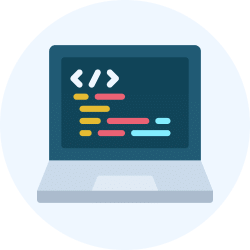System Development Life Cycle | System Design - Software Development PDF Download
| Table of contents |

|
| Introduction |

|
| Requirements Gathering |

|
| System Design |

|
| Implementation |

|
| Testing |

|
| Deployment |

|
| Maintenance |

|
| Sample Problems (with solutions) |

|
Introduction
The System Development Life Cycle (SDLC) is a framework used by software developers and engineers to guide them through the process of building and maintaining a software system. It provides a structured approach to develop high-quality software by following a series of defined phases. In this article, we will explore the different phases of SDLC, along with examples and simple code snippets to help you understand each step.
Requirements Gathering
The first phase of SDLC involves understanding and documenting the requirements of the software system. This phase typically includes meetings with stakeholders, users, and subject matter experts to gather information about the system's functionalities, user expectations, and constraints. Here's an example:
Example: Suppose we are building a simple calculator application. The requirements might include:
- Basic arithmetic operations (addition, subtraction, multiplication, division)
- User-friendly interface
- Support for decimal numbers
System Design
Once the requirements are gathered, the next phase is system design. In this phase, the software architecture is planned, and the system's components and their interactions are defined. Here's an example:
Example: For our calculator application, the system design might involve designing the user interface, creating separate modules for each operation, and defining how these modules communicate with each other.
Implementation
The implementation phase involves writing the actual code based on the design specifications. Developers use programming languages and frameworks to bring the design to life. Here's an example code snippet in Python for our calculator application:
Code:
def add(x, y):
return x + y
def subtract(x, y):
return x - y
def multiply(x, y):
return x * y
def divide(x, y):
return x / y
Testing
Testing is a crucial phase of SDLC, where the developed software is thoroughly tested to ensure it meets the specified requirements. Different testing techniques, such as unit testing, integration testing, and user acceptance testing, are performed. Here's an example:
Example: To test our calculator application, we can write unit tests to verify the correctness of each operation function. For instance, we can test the addition function by providing inputs (e.g., add(2, 3)) and checking if the output matches the expected result.
Deployment
Once the software passes all the tests, it is ready to be deployed. The deployment phase involves installing the software on the target environment and making it available for users. Here's an example:
Example: For our calculator application, we can create an installer or package the code into an executable file that users can download and install on their computers.
Maintenance
The final phase of SDLC is maintenance. It involves monitoring the software, identifying and fixing bugs, and making enhancements based on user feedback. Maintenance ensures the software remains functional and up-to-date. Here's an example:
Example: If users report a bug in our calculator application, such as incorrect division results, we need to investigate and fix the issue. We may also receive suggestions to add new features like square root or exponentiation, which can be implemented in the maintenance phase.
Sample Problems (with solutions)
Problem 1: Design a simple system for a library management software.
The system might include modules for adding books, managing borrower information, tracking due dates, and generating reports.
Problem 2: Implement a function in Python to calculate the factorial of a given number.
def factorial(n):
if n == 0:
return 1
else:
return n * factorial(n-1)
Conclusion
Understanding the System Development Life Cycle (SDLC) is essential for aspiring software developers. By following the phases of SDLC, you can ensure a structured approach to software development, leading to high-quality and reliable systems. Remember, each phase plays a vital role in building software that meets user requirements and expectations.
|
25 videos|13 docs|2 tests
|














